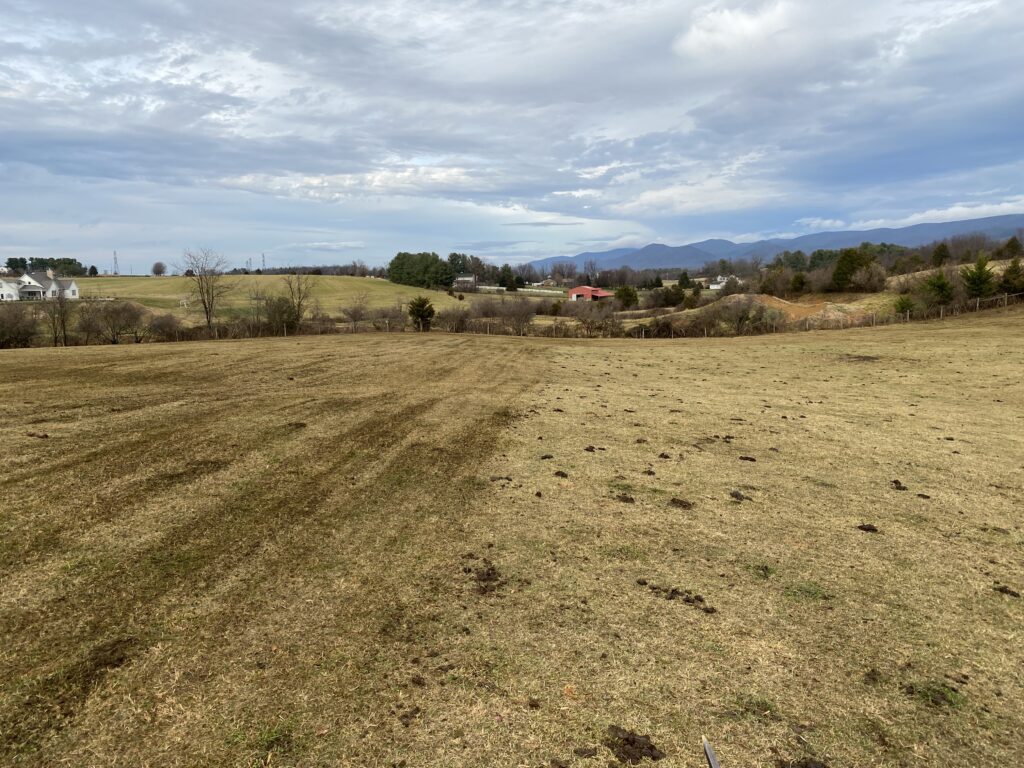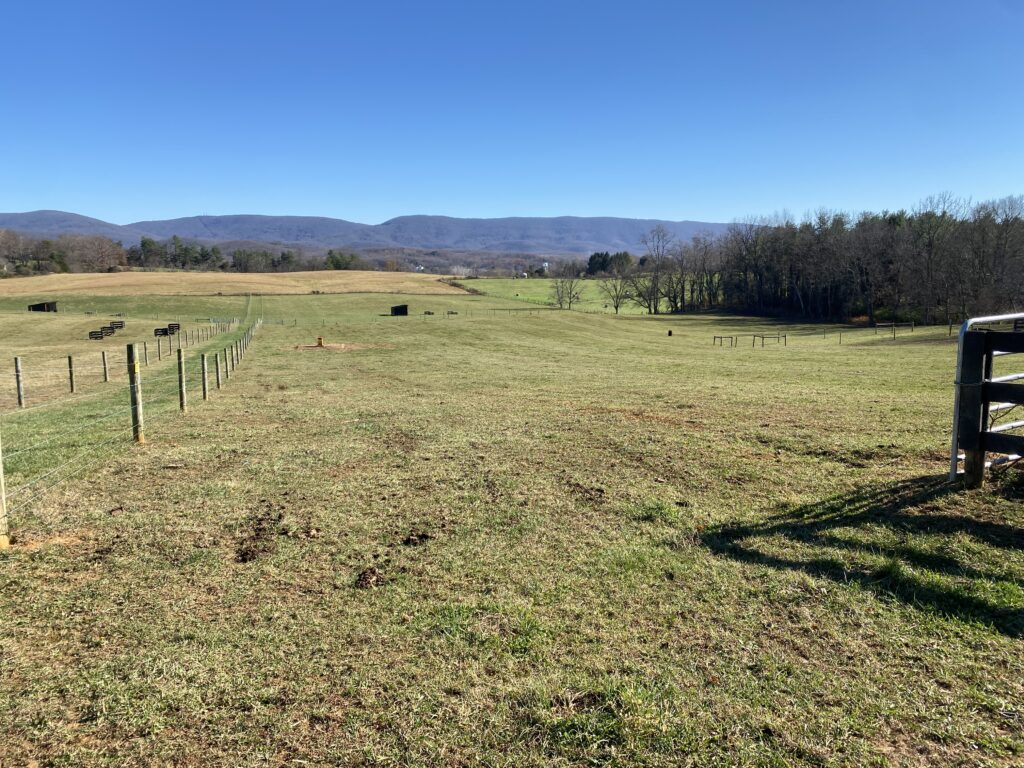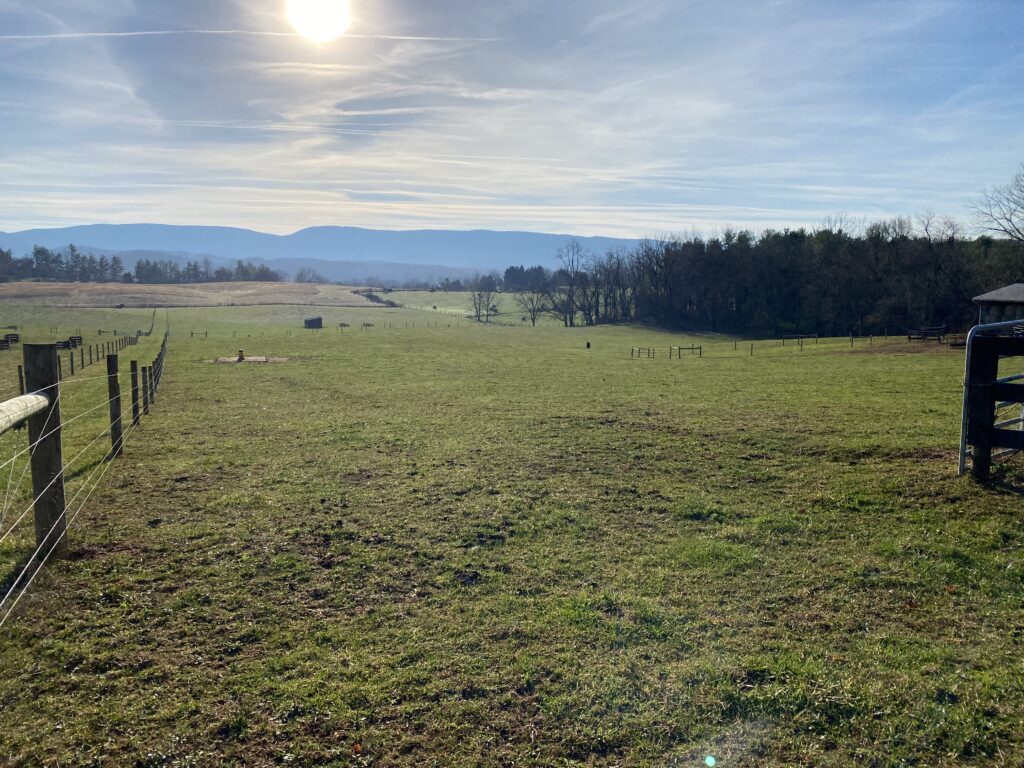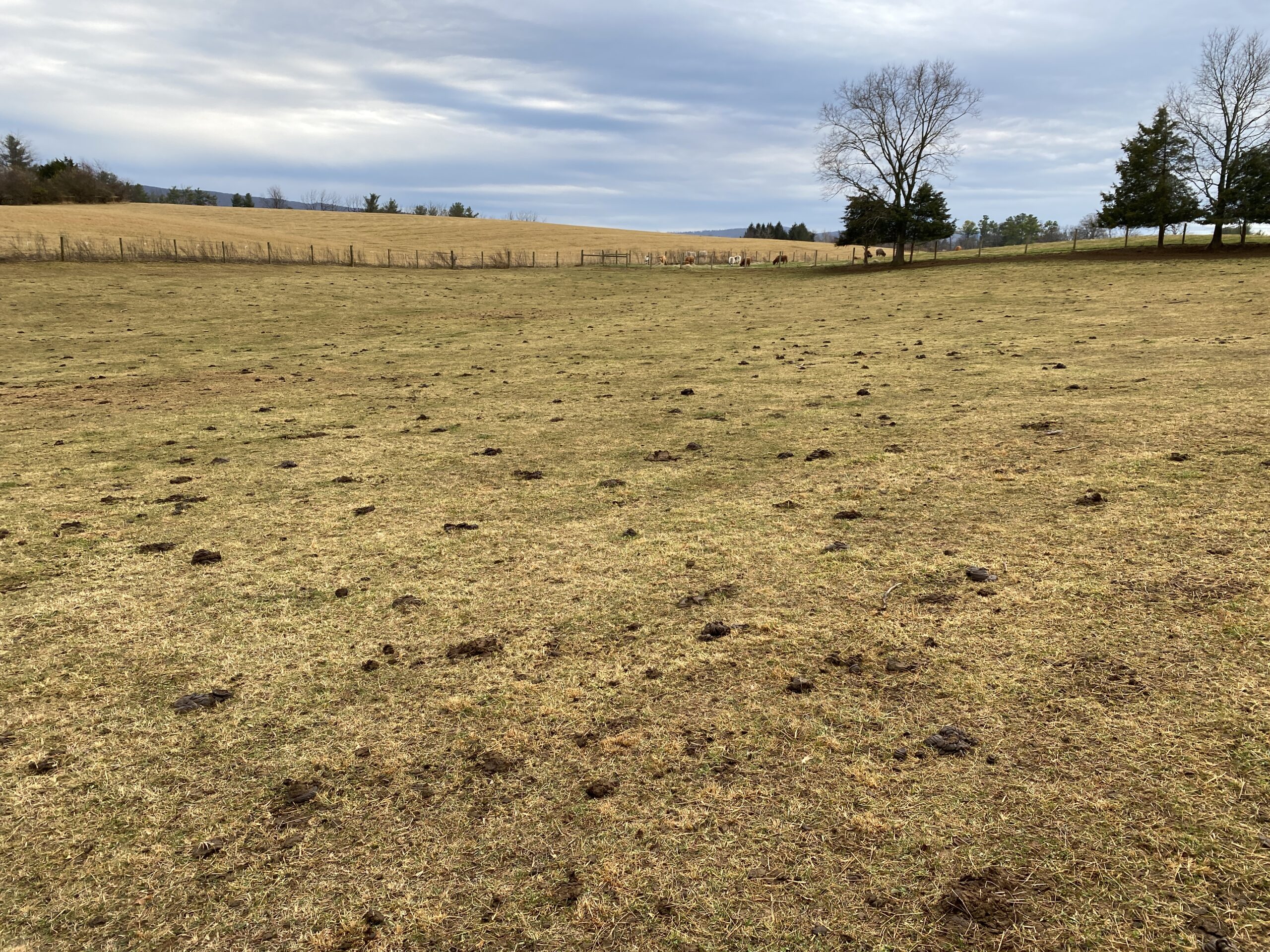Cows love to eat. With lots of eating comes lots of pooping, especially when cattle consume high levels of dry matter, like hay. Have you noticed your pastures getting saturated with manure during the hay feeding season? Let’s dive into a few ways to keep your fields fit.
Rotational Grazing
One of the easiest ways to start managing a pasture is by giving it a break. Rotational grazing can be as simple as a single strand of electric rope splitting a field. There are lots of reasonable solar fence energizers or chargers on the market if no electric is available. Step-in posts and electric poly rope fencing are readily available at most farm supply stores. Some farms have permanent fencing installed to facilitate a rotational pattern of multiple fields, giving each section an opportunity for regrowth and regeneration. The best rotational plans allow the pasture to regrow for at least 75% of time, and have the cattle occupying the space for 25% of the time. Check with your local 4H Extension office to see if they will create a rotational plan for your farm. Many will do it at no charge.
Dragging Your Pasture
Dragging a pasture is a method used to spread the manure. A chain harrow is the most common tool used for this, but it can be as easy as dragging a gate or section of chain-link fence behind a tractor or ATV. There are lots of different styles and sizes available to accommodate many different applications.
Dragging a pasture has several advantages. The most obvious is that it helps to spread the manure more evenly across the ground. This gives a more uniform distribution of the nutrients back to the soil, avoiding hot spots under the manure pile where grass would not normally grow. Secondly, flies lay eggs in the soft manure piles. Spreading the manure helps the manure to dry more quickly and will make a significant difference in the fly population on the farm. Thirdly, dragging a field will help to eliminate the odor of manure. Greener grass, less flies, less smell equals win, win, win.
Below are some photos of a winter pasture in Virginia. This is a 5-acre parcel with approx. 70 head of cattle getting fed hay every day. They occupied this pasture for 12 days before these photos were taken. The cows had been moved to a new pasture and the photos show the progression of the pasture during the re-growth stage.
Day 0 – Cows had just been moved. Dragging in process. Smell is present and noticeable.

Day 1 – Some of the manure had absorbed into soil. No smell.

Day 5 – No Manure visible. Grass color improved, even in the colder climate.

Video of a chain harrow drag being utilized.
Weed Control
Grass will over power weeds in healthy soil. If you have weeds and thistles in your pasture, consider doing a soil test. These tests can usually be done though your local extension office or farm co-op.
Chemical weed control involves the use of pesticides. This method can be effective for weed control but can also have short or long term negative impact on your soil or cattle. Do your research before using chemicals on your property.
Mechanical weed control is pulling or mowing the weeds. In many cases, mowing the weeds or thistles at the proper time in their growth cycle will kill the plant and allow grass to take its place. Each plant has a different reproductive cycle. You’ll want to research the plants in your pasture to see if this is an effective control method. Mechanical weed control requires the resources of a mower or the physical labor of pulling the weeds.
Conclusion
Your situation will be different then your neighbors. There is no template that works for everyone. Finding small things to help you maximize your land resources will pay dividends in the health and well-being of your herd. Happy cows keep farmers stress-free. Stress-free farmers require less whiskey. Less whiskey creates fewer arguments. What did we learn? Spreading the shit in your field will keep it from hitting the fan in your house.



